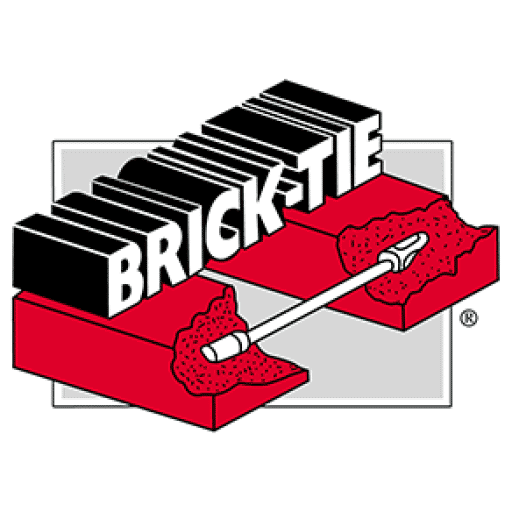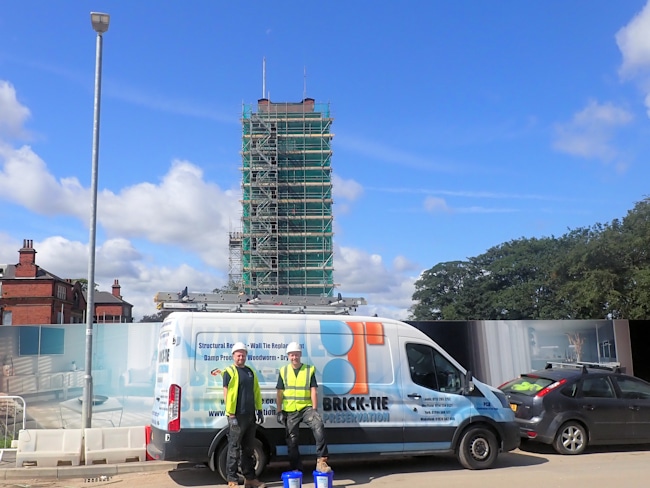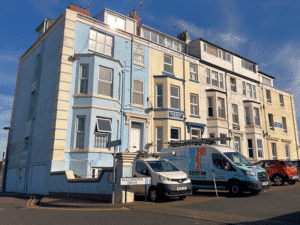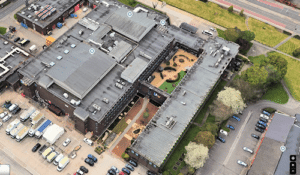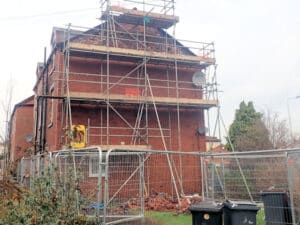Helifix corset for grand old Water Tower
We don’t know about you, but we think the best stories are about people. And because people live and work in buildings, their structures matter. This one features a smashing old building we just worked on, one that’s played a crucial part in many people’s lives. Let’s visit Seacroft Hospital in Leeds, and especially, its iconic Water Tower. Whilst this post will tell you about the technical issues the building presented us with, and how we were able to address its structural defects. Our story underlines the reasons why preservation, and retention of these buildings matters so much, to communities across Yorkshire. And why it mattered to us.
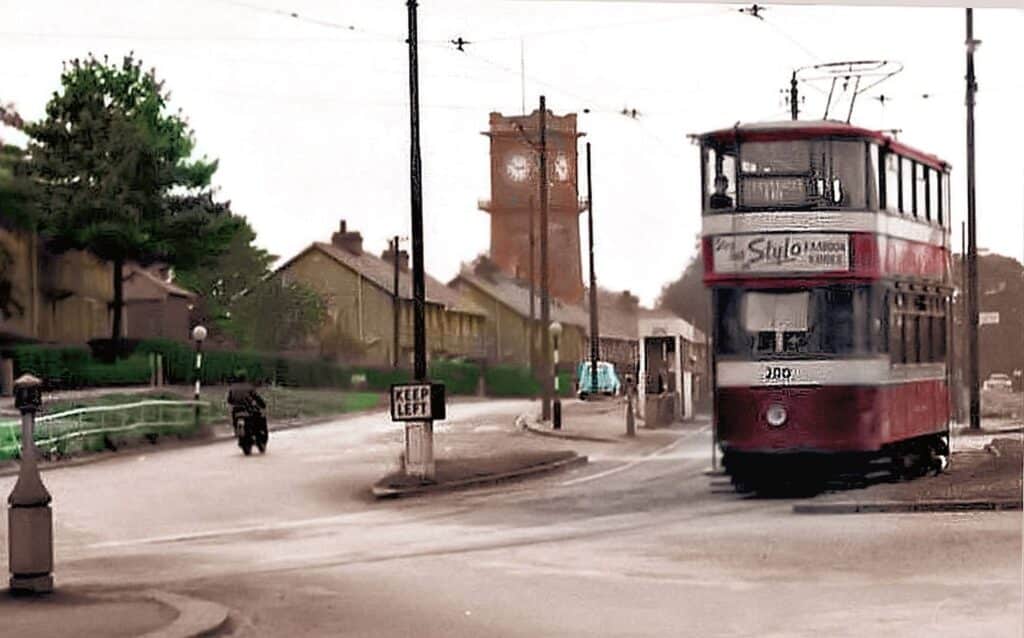
As you’ll read, Brick-Tie have just completed important structural repairs to it. But really, the history behind the tower, it’s part in Leeds’s life, and in peoples lives’, combine to make it special for us all.
A few years ago we were asked to visit and check-out some severe cracks, which had developed in the tower over its 100 year service. Strata homes were scheduled to repair it, and needed expert advice on sympathetic repair, of this Grade 2 listed old water tower.
In 2015 Keepmoat and Strata announced that they would be developing the former site, building over 500 homes. Unsurprisingly, the plans included keeping the landmark tower, which had run into disrepair.
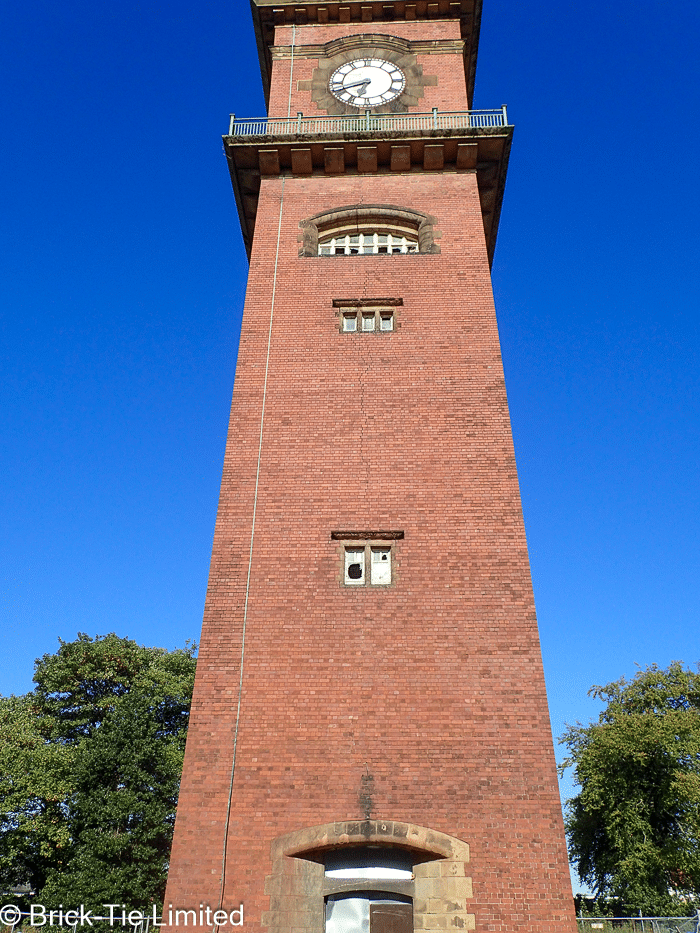
The human side of structural repairs – memory lane.
So that’s where our technical director came in. Called for help and advice, he has a story of his own to tell.
Over to Bryan: “Once I climbed up-top, and looked down from the balcony, I was instantly transported to the late 1960’s. I was a child, a proud member of The Church Lads Brigade. We were at the foot of the tower, on a scotching day. I remember looking up at the clock face, thinking how great it would be, to be up there, on top of the world”.
“It was the annual Seacroft Hospital summer fete, held on the wide grass lawn below the clock. I was in the junior gym team, there to put on a display for the parents – I loved showing off, when I was a skinny little kid. Summer fetes were a big treat in Seacroft, and loved by the whole community.”
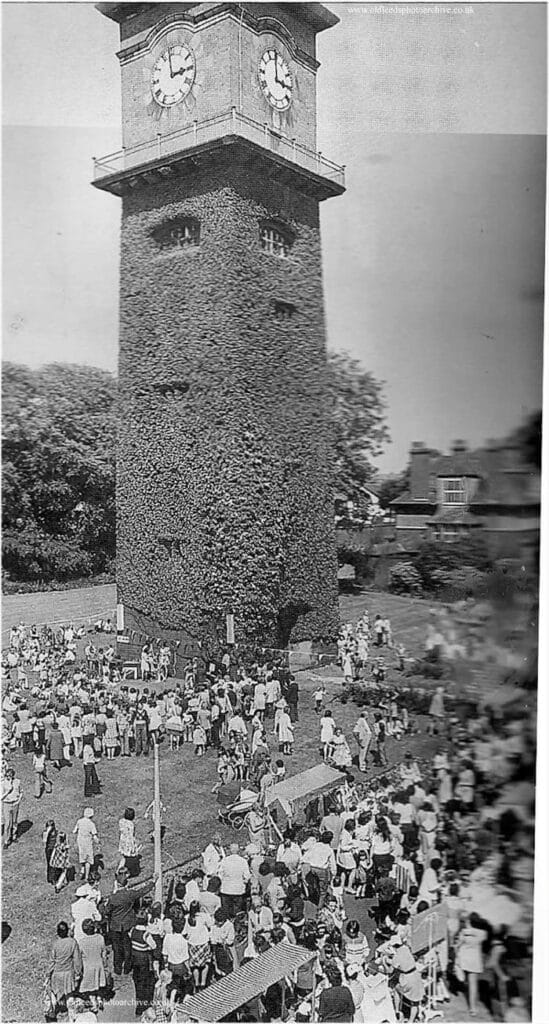
“As I pondered the view, my mind moved further back, to an earlier fete, when younger still. This time there was a fancy dress competition for us, I’d excitedly donned cardboard cereal boxes, that my mam coated in tin-foil. I was an an astronaut. Nasa had just orbited the moon, with Apollo 8. We’d watched our black and white telly, wide-eyed in wonder, as the ‘spacemen’ flew right around it, and back to Earth. It turned out it wasn’t made of cheese. I didn’t win the competition though; disappointed, I nearly tripped over my bottom lip, but Mam took the pain away, with an ice-cream cone”

“I’d forgotten those times, but they flooded back, as pin-sharp as they were 56 years ago, and I smiled.”
How many stories have been made, and remembered, by the thousands of children lucky enough to be taken here, for a grand day out? He resolved there and then, to win the job and help out this building. And, call in on his 88 year old Mam, to thank her for that ice-cream.
Pain, loss and hope.
The site goes back well before the tower was built. Serving Leeds for 200 years, first acting as a smallpox hospital, before taking on outbreaks of diphtheria, and scarlet fever. The tower you see was built later, in 1909. The hospital that stood below it was unusual, with wards separated-out, connected by long covered corridors. This was because it specialised in communicable diseases, which spread more easily if wards were side-by-side.
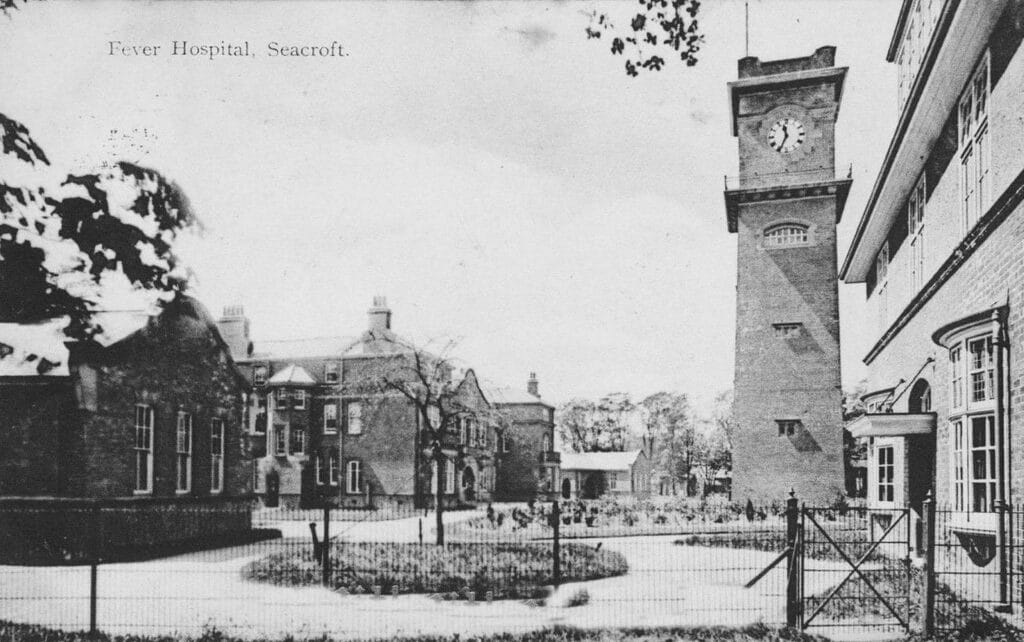
There are terribly sad stories of this place. In those times life could be short, there were no antibiotics, little in the way of pain relief, and nutrition was barely understood. Thousands never returned from their time in hospital. But of course, many more did return home, their lives saved by the dedicated professionals, working hard day and night at Seacroft. So it goes. These stories are woven in the fabric of the place.
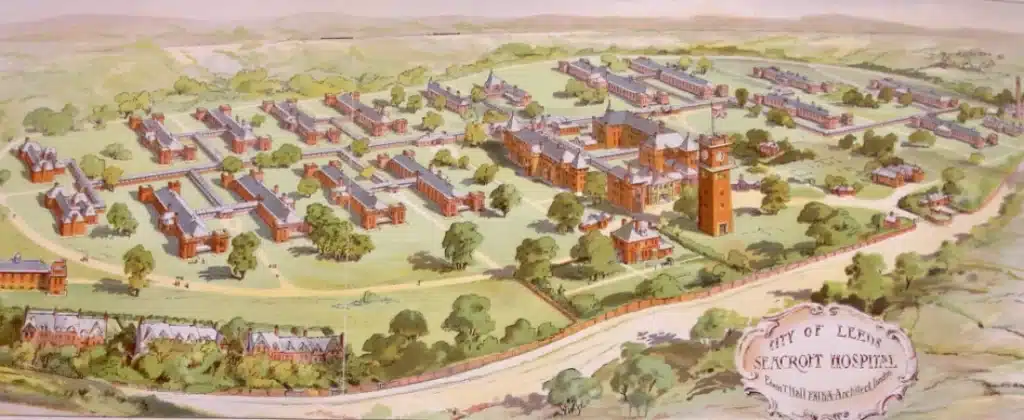
So the tower matters. What most people don’t realise is that it has the dual purpose, being primarily built as a water tower. The thick walls supported huge tanks, which could hold up to 28,000 gallons of clean water, for Killingbeck and Seacroft hospitals.
The damaged fabric.
Walking into the tower, you’re struck by thickness of the walls at the base. From inside the windows are deeply recessed, looking like those in a medieval castle. At the base, the solid brick is a meter thick. With height, the thickness reduces in three steps. Eventually down to a ‘meagre’ 450mm at the top. The weight is in the tank at the pinnacle, so these slender sections are strengthened with 450mm thick brick columns. Large steel beams cross from column to column, supporting the huge water tank. It was built to last. There are no lintels over the windows, but segmental arches span across each, some are 600mm deep.
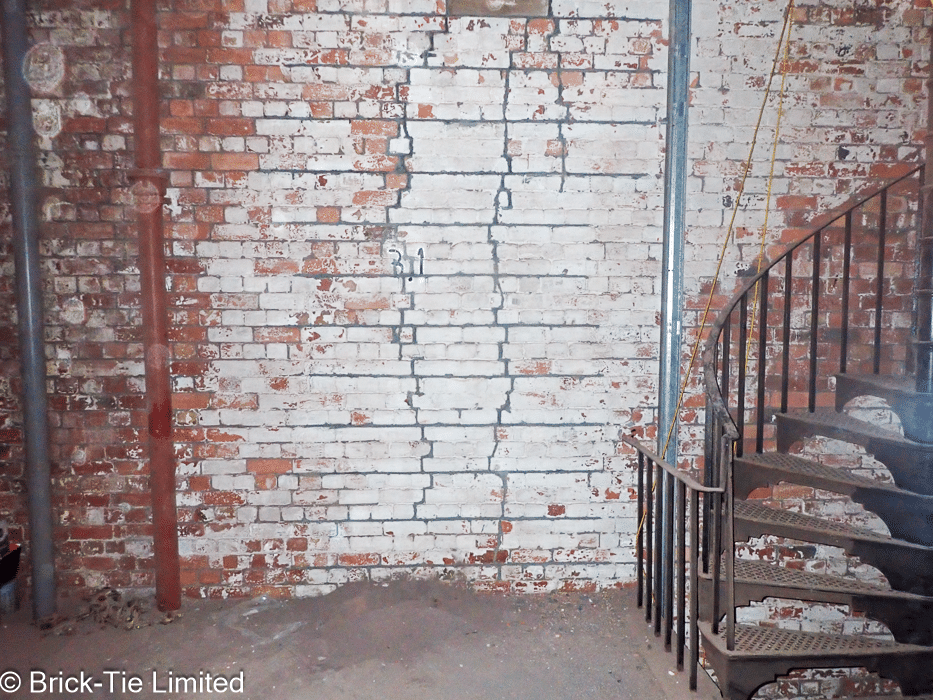
The water tanks and roof leaked, causing rusting steel, and eroded masonry. Rainwater pipes have rusted and cracked. Large cracks had appeared in the walls and window arches, and then propagated from top to bottom. These allowed further water penetration, and a cycle of decay took over. The slow and subtle damage water does is insidious. Mortar washed from perpendicular joints in arches can reduce compression in them. Breakdown of the beds reduces brick-brick bonding, allowing slippage, so arch rings de-laminate under shear loads. Rusting steel beams laminate, transferring the effects of their section change into the masonry. Dead loads may shift, load paths morph, from straightforward, to convoluted. There’s was a mix-of symptoms, needing correct diagnosis, before suitable and sufficient remediation could be agreed.
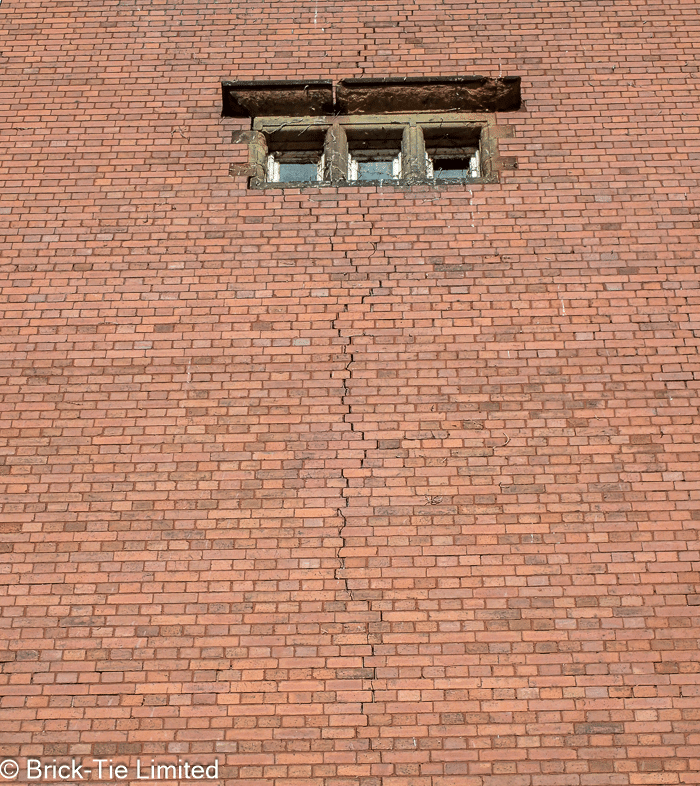
That’s why Brick-Tie were called-in, to work alongside Strata’s structural engineers, tasked to find and deliver an appropriate method of structural repair. In view of his connection with the place, Bryan put extra hours into the project, determined to win the work, and help bring the old tower back to life.
The tower has been grade 2 listed since 1976, so the design needed to be sympathetic to the fabric of the building, fix the problems, and remain unobtrusive too.
Of course there were lots of builders repairs needed first, to drain the tank, fix the roof and the rainwater goods, repair the spiral staircase and concrete floors This was ably done by Strata themselves.
Brick-Tie specify a repair.
We recognised that the walls would be suitable for the Helifix stress free repair system. As Helifix approved installers for over 30 years, we know the system inside-out. A detailed appraisal was completed, before a specification was produced for all parties to study. With such a historic and prominent building every aspect of our proposals was interrogated. Our design team fielded technical and practical questions, and were able to ‘tweak’ the system, ensuring that the finished repair ticked everyone’s boxes – and didn’t cross anyone’s red-lines. Due diligence included consultation with Helifix system engineers too, with James Plaskitt being invited into the process. He gave a green light, adding further gravitas, which our clients appreciated. Helifix is not just about a product; a holistic view is always available, and is one of the reasons we’ve maintained such a long, and close professional relationship with the company.
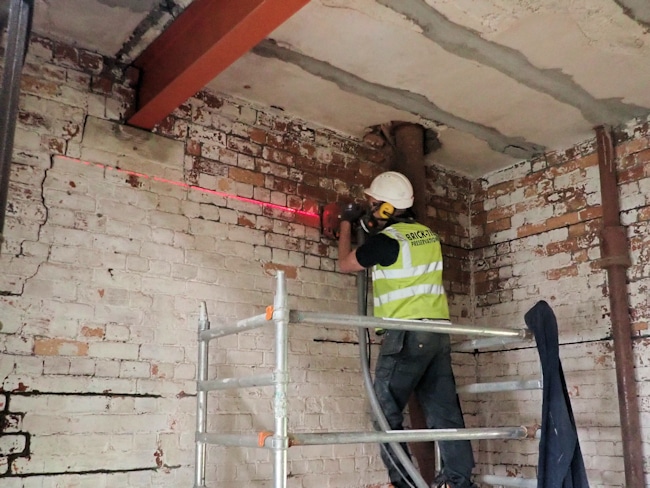
Those who work in multi-disciplinary teams understand, this can be a long, sometimes arduous process. It’s where our experience, and a deep understanding of the Helifix repair system stands out. We held in-mind the other trades on site, supervised the details that overlapped with our work, and produced exactly what the client wanted – effective masonry repairs, virtually invisible to the eye.
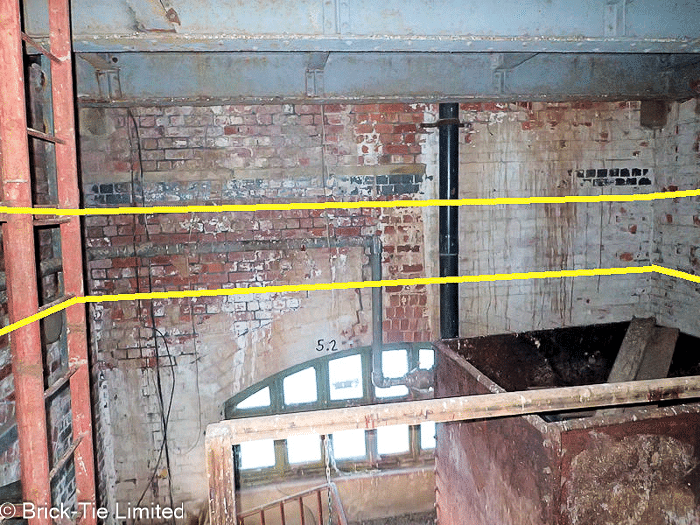
Technical guidance, and organisation throughout the project was passed to our senior surveyor, and Director, David Gill. One of our veteran technicians, Ryan Shann, supervising. Their skill, care and efficiency delivered the goods. No sub-contractors are used by Brick-Tie because this work, being hidden from view, needs diligence and accountability. Ryan has over 22 years’ service, and with his colleagues, has ownership of Brick-Tie, through its Employee Ownership Trust.
Over 800 meters of Helifix stainless steel helibars bars were installed, along with dozens of localised repairs and Helifix CemTies. These Helibars and fixings provide tensile strength, without being too rigid. The concentric cords forming the Helibeams, wrap-around the old water tower, installed externally, and internally too, and at several levels. In some ways these bands of stainless steel are not dissimilar to a corset. Helibond polymer-modified grout was used to encapsulate the bars.
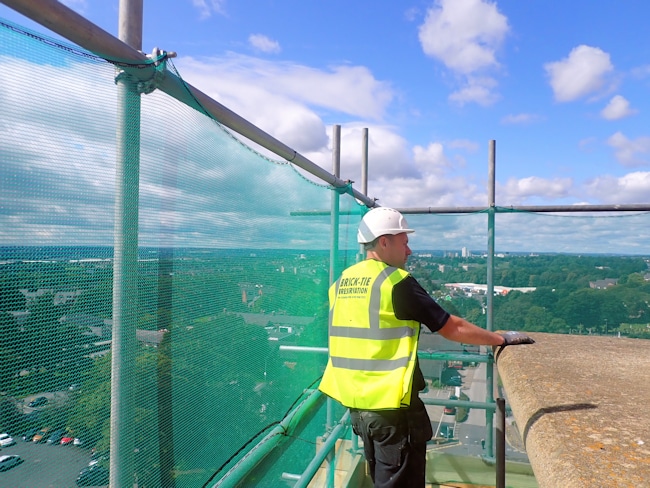
The fractured and deflected arches were secured using Helifix CemTies, installed inclined, through the arch soffits, up into the Helibeam strengthened brickwork over each opening. Cracks were injected in-depth, using Helibond, and the pointing was repaired, using colour-matched, natural lime mortars.
Real skill is in hiding the structural repair
Despite the extent of work, you’d cannot see it now – that’s success in our book! Strata commented positively on our technician’s approach to their work, with an exemplary health and safety record from start to finish.
As mainly Leeds lads, the crews loved working on this job, with its breath-taking views across Leeds.
Our thanks go to Keepmoat and Strata’s teams, as well as Helifix, and all those who had a part in saving this old landmark.
We apply our skill to all kinds of structures, from small terraced house, to historic building – all get the same attention from our qualified and experienced crew. Ask for a survey, and see how we can make a complex job easy.
